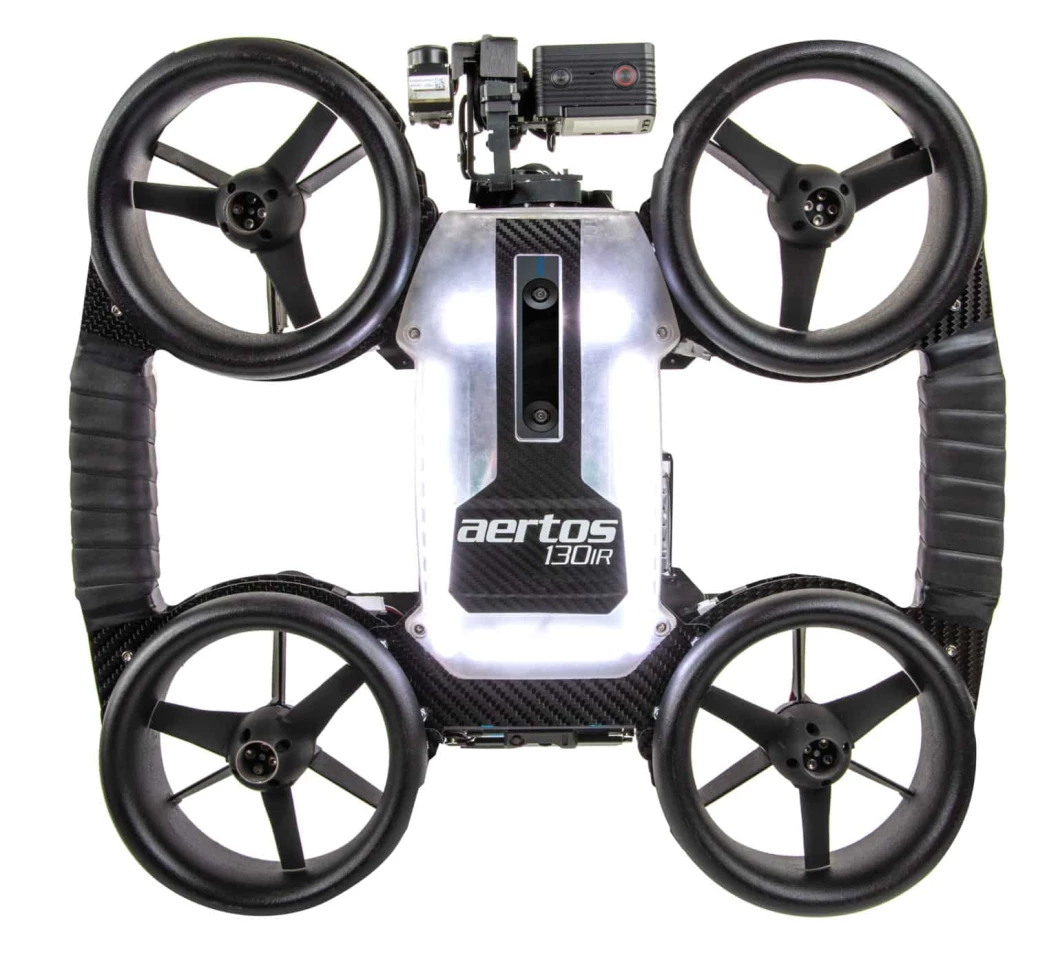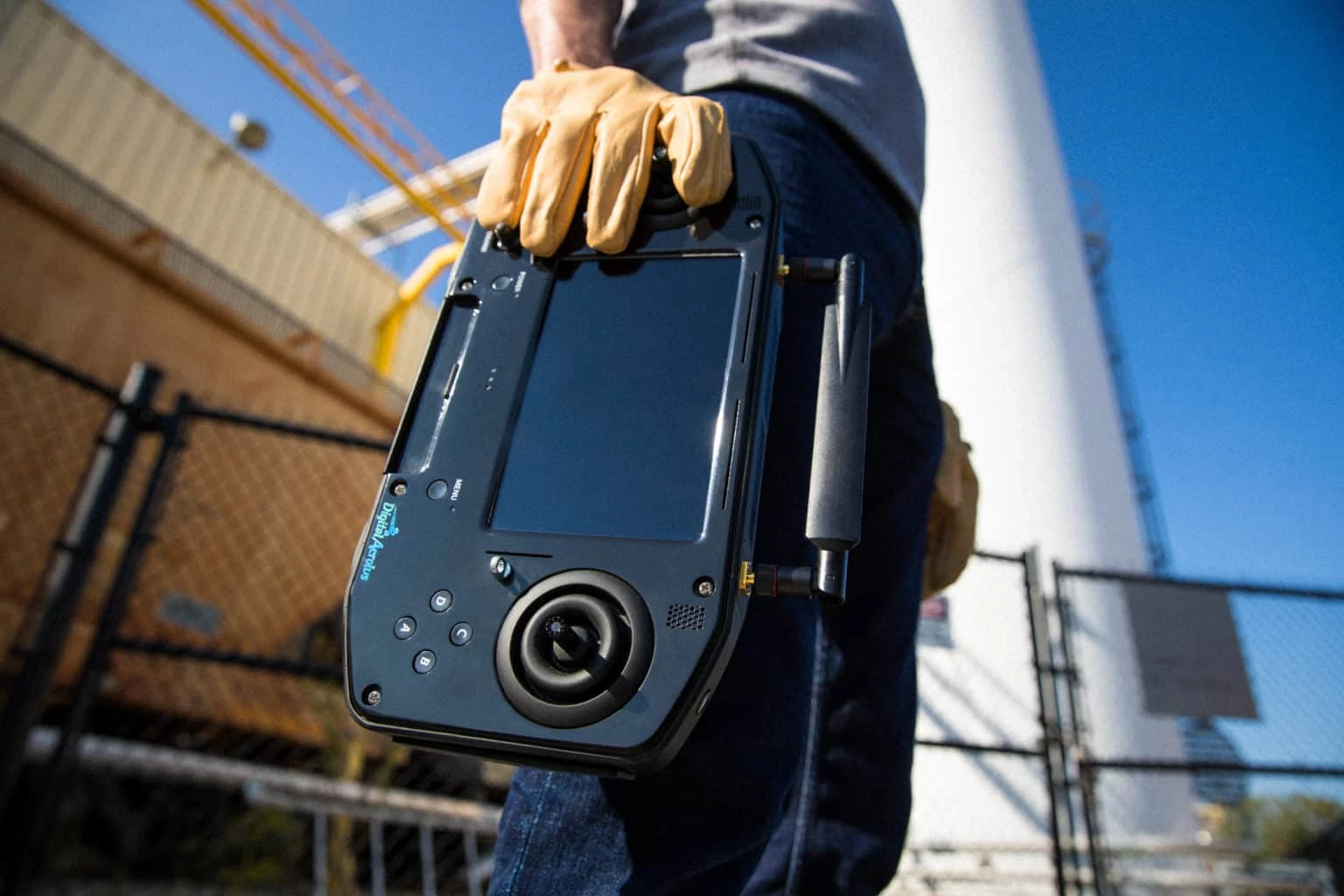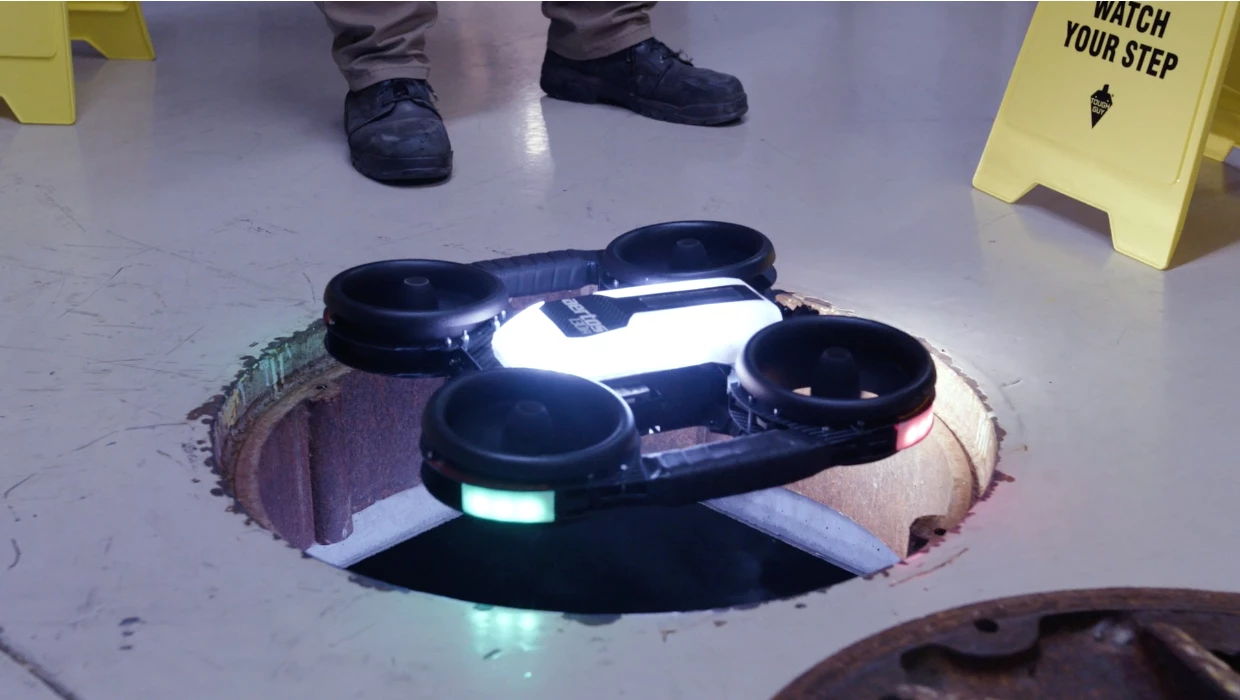If you've ever tried flying a cheap consumer quadcopter indoors, you'll know how easily they can crash into walls or furniture. Now imagine trying the same with a much more expensive industrial drone. That's why the new Aertos 130IR is built to be tough.
Manufactured by Kansas-based company Digital Aerolus, the 130IR features a carbon fiber composite frame with grip tape-wrapped carrying handles, protective shrouds around its four propellers, and an omnidirectional array of nine sensors including LiDAR and depth-sensing units. Those sensors not only allow the drone to perform mapping tasks, they also help it to maintain its position in three-dimensional space – this is a particularly important feature in settings where GPS won't work.
The 130IR is additionally equipped with an LED spotlight, a gimbal-mounted Sony RX011 4K/30fps optical camera, and a FLIR Boson 320 infrared camera. A separate FPV (first person view) camera streams real-time video back to the operator, although the drone can also fly autonomously.

The whole copter tips the scales at a claimed 5.9 lb (2.7 kg), measures 21 inches (533 mm) across, and has a flight time of 10 minutes per charge of the onboard 4,500-mAh/22.2-V lithium-ion battery – it comes with three of those batteries.
According to its makers, possible applications for the Aertos 130IR include the mapping and/or internal inspection of power plants, mines, chimneys, bridges and pipes.
It's demonstrated in the following video.
Source: Digital Aerolus







